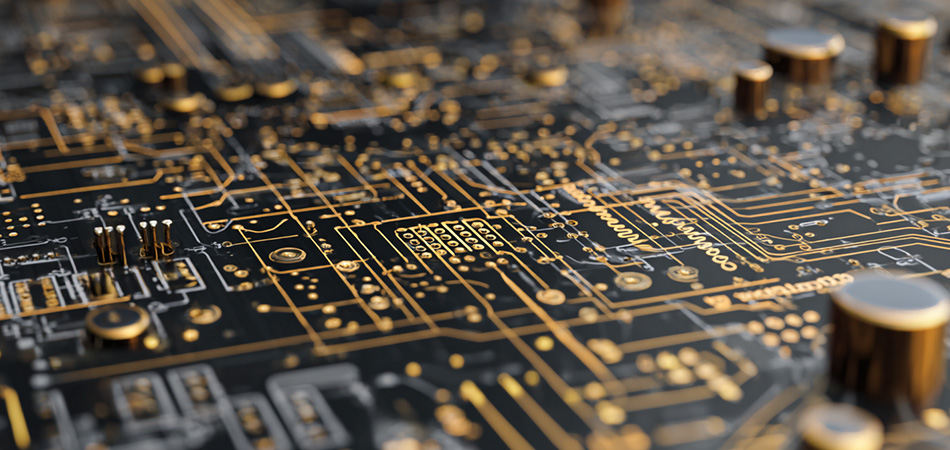-
- PCB TYPE
- PRINTED CIRCUIT BOARD PROTOTYPE ALUMINUM PRINTED CIRCUIT BOARD R&F PCB FPC HIGH FREQUENCY PCB HIGH-TG PCB HEAVY COPPER PCB HDI PCB PCB FOR LIGHTING METAL CORE PCB
time:Jun 14. 2025, 15:42:38
In the rapidly evolving automotive industry, the integration of advanced electronics has become a defining characteristic of modern vehicles. From engine control units (ECUs) and advanced driver - assistance systems (ADAS) to in - vehicle infotainment systems, printed circuit boards (PCBs) have emerged as the unsung heroes, quietly powering the functionality and performance of these complex automotive electronics. As vehicles become smarter, more connected, and increasingly reliant on electronics, the role of automotive PCBs has grown in importance, driving innovation and shaping the future of mobility. This article takes a comprehensive look at automotive PCBs, exploring their unique features, design considerations, manufacturing processes, applications, market dynamics, challenges, and future trends.
Understanding Automotive PCBs
Market Size and Growth
The global market for automotive PCBs has been growing steadily in recent years, driven by the increasing adoption of advanced automotive electronics and the growing demand for electric vehicles. According to a recent market research report, the global automotive PCB market is expected to continue to grow at a significant CAGR over the next few years.
The growth of the automotive PCB market is being driven by several factors, including the increasing complexity of automotive electronics, the growing demand for safety and comfort features, and the transition to electric and autonomous vehicles. As vehicles become more intelligent and connected, the demand for high - performance PCBs with advanced features and capabilities is expected to continue to increase.
Market Segmentation
The automotive PCB market can be segmented based on various factors, such as product type, application, and region.
Based on product type, the automotive PCB market can be segmented into single - layer PCBs, double - layer PCBs, multi - layer PCBs, and high - density interconnect (HDI) PCBs. Multi - layer PCBs and HDI PCBs are the fastest - growing segments of the market, due to their ability to accommodate the increasing complexity of automotive electronics.
Based on application, the automotive PCB market can be segmented into engine control units, transmission control units, advanced driver - assistance systems, in - vehicle infotainment systems, electric vehicle power electronics, and other applications. The demand for PCBs in advanced driver - assistance systems and electric vehicle power electronics is expected to grow at a significant rate in the coming years.
Based on region, the automotive PCB market can be segmented into North America, Europe, Asia Pacific, and the rest of the world. Asia Pacific is the largest market for automotive PCBs, due to the presence of major automotive manufacturers and the growing demand for electric vehicles in the region.
Competitive Landscape
The automotive PCB market is highly competitive, with a large number of players competing for market share. The key players in the market include leading PCB manufacturers, as well as automotive electronics suppliers.
The competition in the automotive PCB market is driven by factors such as product quality, cost - effectiveness, technological innovation, and customer service. To stay competitive, companies are investing heavily in research and development to develop new and advanced PCB technologies, as well as to improve the quality and reliability of their products.

Challenges and Future Trends of Automotive PCBs
Challenges
Despite the growing demand for automotive PCBs, the industry faces several challenges. One of the main challenges is the increasing complexity of automotive electronics, which requires PCBs with higher performance and more advanced features. This has led to a growing demand for high - density interconnect (HDI) PCBs, multi - layer PCBs, and other advanced PCB technologies.
Another challenge is the need for improved thermal management, as many automotive components generate a significant amount of heat during operation. This requires the use of advanced materials and manufacturing processes to ensure that the PCBs can dissipate heat efficiently and maintain optimal operating temperatures.
In addition, the automotive industry is facing increasing pressure to reduce costs and improve efficiency. This has led to a growing demand for cost - effective PCB solutions that can meet the performance requirements of automotive applications.
Future Trends
Despite the challenges, the future of automotive PCBs looks promising, with several trends expected to shape the industry in the coming years.
One of the key trends is the increasing adoption of electric and autonomous vehicles. As the demand for electric and autonomous vehicles continues to grow, the demand for high - performance PCBs with advanced features and capabilities is also expected to increase. This includes PCBs with high - speed data processing, communication, and sensing capabilities, as well as PCBs with excellent thermal management and reliability.
Another trend is the increasing use of artificial intelligence (AI) and machine learning (ML) in automotive electronics. AI and ML technologies are being used to develop advanced driver - assistance systems, autonomous driving systems, and other intelligent automotive features. This requires PCBs with high - performance computing capabilities and the ability to handle large amounts of data.
In addition, the automotive industry is moving towards a more connected and intelligent future, with the increasing use of the Internet of Things (IoT) and 5G technologies. This requires PCBs with high - speed communication capabilities and the ability to connect to a variety of devices and networks.
Conclusion
Automotive PCBs play a crucial role in the functionality and performance of modern vehicles. As the automotive industry continues to evolve towards a more connected, intelligent, and sustainable future, the demand for high - performance PCBs with advanced features and capabilities is expected to continue to grow.
To meet this demand, PCB manufacturers and automotive electronics suppliers need to invest heavily in research and development to develop new and advanced PCB technologies, as well as to improve the quality and reliability of their products. They also need to work closely with automotive manufacturers to understand their requirements and develop customized PCB solutions that meet the specific needs of each application.
In conclusion, the future of automotive PCBs is bright, and they will continue to play a key role in driving the evolution of vehicle electronics and shaping the future of mobility.

Got project ready to assembly? Contact us: info@apollopcb.com



We're not around but we still want to hear from you! Leave us a note:

Leave Message to APOLLOPCB
